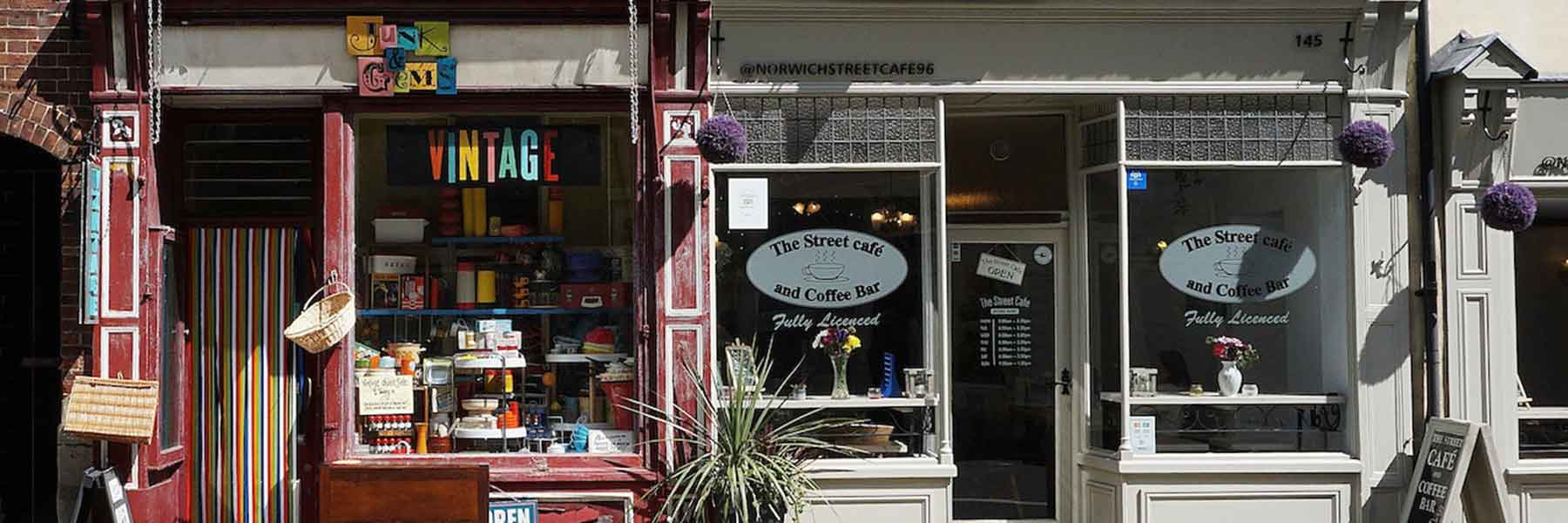Fill an industry talent gap with sought-after skills.

Circular thinking: How the Preston Model is creating a sustainable local economy
Discover how the Preston Model helps stimulate local economies and reinforce local supply chains.
An innovative Spanish town. A City Council in the north of England. And an academic from the University of Central Lancashire. Here’s how they contributed to a revolutionary, people-centred model that transformed a local community’s economy.
What is the Preston Model?
UCLan’s Dr Kamalavelu Velayutham describes the Preston Model as “an intellectual initiative that encourages the use of local resources to stimulate the local economy, which in turn reinforces local supply chains, and widens opportunities across various sectors”.
The model “encourages and coordinates anchor institutions to be more strategic with their procurement”. By building better supply chains and creating economies of scale within the local community, local operational capacity becomes stronger and more self-sufficient.
The background
When the Economic Crisis hit in 2008, the entire world was thrown into turmoil. But thanks to a pioneering community wealth building initiative, the people of Preston were able to rebuild their economy and rethink how business is done.
Inspired by the Spanish town of Mondragón, home to a large and sophisticated co-operative economy, UCLan academic Dr Julian Manley explored how co-operative values and principles have successfully built a buoyant economy in the area since 1956.
The Mondragón system, which consists of 98 co-operatives with more than 80,000 employees working in areas such as finance, retail, industry, and knowledge development, is the world’s biggest co-operative socioeconomic project, and one of the country’s largest employers. Whilst the rest of Spain suffered, struggling with a widening economic imbalance post-crash, Mondragón remained relatively stable.
Impressed with Dr Manley’s study, Preston City Council decided to fund further action research by UCLan, investigating how similar co-operative initiatives could boost local economic investment. Research led to policy, and together they established what’s now known as the Preston Model.
So what are the principles of the Preston Model?
The Preston Model now serves as the blueprint for community wealth building around the world. It aims to create a more equal society, where everyone has the potential to reap the rewards of local economic development and prosperity, by redirecting money back into the local area. Towards the beginning of 2021, Preston’s Community Wealth Building 2.0 was launched – a revised strategy with delivery and collaboration at its core, and a focus on environmental justice, inclusive recovery, and greater democracy.
Key ways the objectives are achieved are:
-
Prioritising local businesses for public spending (tripling the proportion of procurement budget spend in local area), investing in local communities, and supporting productive economic activities to keep wealth within the region
-
Encouraging the formation of worker-owned co-ops to ensure equality and democracy within workplaces, protecting workers, and reclaiming control
-
Working with anchor institutions (such as the University of Central Lancashire) to handle assets, share knowledge, lower costs, and increase impact
Has the Preston Model been successful?
The Preston Model garnered significant acclaim, even earning the title of ‘Most Improved City in the United Kingdom’ in PwC and Demos’ Good growth for cities 2018 report.
Preston City Council reports the main outcomes so far:
-
"The most recent spend analysis found that the procurement from institutions rooted in Preston retained within the city was £112.3m - a rise of £74m from 2012/13.
-
Within the wider Lancashire economy (including Preston) £488.7m of spend had been retained, a rise of £200m from the baseline analysis.
-
Since the inception of the project, 4000 extra employees in Preston are now receiving the Real Living Wage (2018 initial ONS outrun).
-
The institutions thus far engaged in the process - so called "anchor institutions" - include the City Council themselves, Lancashire County Council, the Office of the Police and Crime Commissioner for Lancashire, the Community Gateway housing association, Preston's College, Cardinal Newman College and the University of Central Lancashire (UCLan). "
The added bonus
A healthier economy results in a happier community. Data shows that after Preston introduced the community wealth building programme in 2013 and jobs and wages began to increase, the mental health and wellbeing of the local community improved.
Life satisfaction increased by 9% and mental health improved by 11%, in line with an 11% improvement in median wages, relative to expected trends.
Understanding the circular economy
The Preston Model and the circular economy share the common goal of promoting local and inclusive economic development and sustainability. The Preston Model incorporates principles of the circular economy by encouraging local production and consumption, reducing waste, and fostering the development of sustainable business practices.
According to McKinsey, for much of the 20th century, economic growth was driven by the use of progressively cheap finite resources. But market trends have indicated that the rising commodity prices of the 21st century can lead to major microeconomic shocks. The circular economy can help to reduce the impact, ensuring that the value of products, materials, and resources is retained for as long as possible.
The circular economy aims to eliminate waste by making the most of existing resources. Products are designed to be reused, repaired, or recycled instead of being thrown away. It creates a closed-loop system, where the materials used in production can be used over and over, reducing the need for new resources and minimising waste.
This approach is more sustainable and can help to protect the environment while also creating economic benefits, as Dr Velayutham explains: “The key to a resilient and competitive future economy lies in resource efficiency and security. To achieve this, we need a paradigm shift, changing the way we view and use resources, focusing on sustainable and local business practices, and finding new forms of value creation, such as the Preston Model.”
From high-tech manufacturing to local waste management, individual organisations can use the circular economy as a model, helping to increase prosperity without consuming more resources.
By harnessing local resources, strengthening supply chains, and empowering co-ops and local businesses, the Preston Model is transforming economies and promoting greater equality. And by adopting circular economy principles, the model is reducing waste, building resilience, and creating a more sustainable and competitive future for everyone.
Dr Kamalavelu Velayutham is the Course Leader for UCLan’s online MSc Supply Chain Management course, which explores how supply chains affect the environment, society, and economy.
It uses the Preston Model as an example to understand the impact on a local level. The course teaches ways to create better and more ethical supply chains. To learn more, head to the course page:
Related posts
See all
Skills to succeed in supply chain management
Explore the skills you’ll need to be successful in supply chain management, and read our expert...
Read the story
A guide to sustainable supply chains
Learn what sustainable supply chains are, along with examples, and the positive impact they can...
Read the story
What's the difference between logistics and supply chain management?
Dive into the nuances of logistics and supply chain management. Uncover the definitions, scopes,...
Read the story